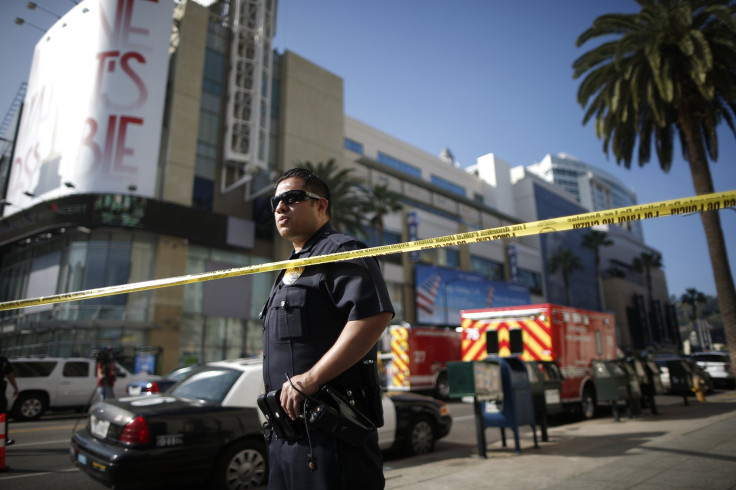Los Angeles Police Department Skid Row Shooting Raises Questions About History Of Excessive Force

The Los Angeles Police Department’s fatal shooting Sunday of an unarmed homeless man in the downtown neighborhood of Skid Row renewed scrutiny of a force with a documented history of brutality toward individuals suspected of crimes. The homeless man, identified thus far only by the nickname “Africa,” joined Ezell Ford and Omar Abrego as recent victims of police violence.
Members of the LAPD’s Central Division and Safer Cities initiative approached the homeless man, who had a history of mental illness, at approximately noon, local time, after authorities received a 911 about a possible robbery in the area, the Los Angeles Times reported. At some point, the situation turned violent, with multiple officers firing shots at the homeless man, who authorities later said had reached for an officer’s weapon. Bystanders recorded video of the deadly encounter.
“It’s always tragic when there’s a loss of life in one of these situations. It’s not an incident taken lightly by any police officer. But we are committed to everyone involved and to the public to conduct a thorough and complete investigation,” LAPD Cmdr. Andrew Smith said.
For critics, the shooting is the latest abuse from a police department that has been accused on countless occasions of violent or inappropriate action. The 1991 LAPD beating of construction worker Rodney King -- and the subsequent acquittal of officers involved in the assault -- served as the catalyst for the city’s 1992 riots and triggered closer inspection of the department’s practices.
The LAPD's problems culminated in 1999 when elements within the department's Rampart division, which patrolled neighborhoods west of downtown Los Angeles, were accused of false arrests, excessive force, perjury and various other instances of corruption. More than 70 police officers were accused of misbehavior, PBS reported. The situation, which became known as the Rampart corruption scandal, prompted the federal government to intervene directly.
The Department of Justice threatened to take direct control of the LAPD if officials refused federal oversight. The result was the imposition in 2001 of a “consent decree” which called for reforms that included an emphasis on reduced racial profiling and corruption. U.S. District Judge Gary Feess ended federal oversight in 2013, citing significant progress within the department, the Los Angeles Times reported.
But the LAPD has endured a series of scandals in the months since the consent decree was lifted. First came the August case of Omar Abrego, 37, who died after an altercation with LAPD officers. Officials said Abrego violently confronted officers who pulled him over for unsafe driving, but witnesses said the officers repeatedly struck Abrego while he was already on the ground, KTLA-TV, Los Angeles, reported. Abrego died later that month from what coroners described as cocaine use, with “physical and emotional duress while taken under custody” described as “conditions contributing” to his death.
LAPD officers fatally shot unarmed, mentally-ill Ezell Ford, 25, just days after the altercation with Abrego. One of the shots was fired from a range so close that the gun’s barrel left a mark on Ford’s body, the Los Angeles Times said. Officers said Ford struggled for a gun before he was fatally shot while family members and witnesses said police used excessive force. An investigation into the Ford shooting has yet to conclude.
© Copyright IBTimes 2024. All rights reserved.





















